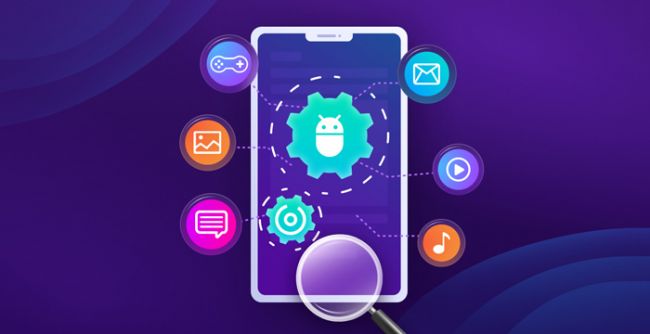Technology
8 min read
Android Automation with Espresso and Appium: Integrating Tools for Seamless Testing


Due to the increase in the mobile application development speed, quality application delivery with user expectations has become more crucial than ever. Android turns out to be one of the most popular platforms in the world, and an application needs careful testing for sure-shot working on devices, operating systems, and user scenarios. This is where automation tests like Espresso and Appium save time and add efficiency and accuracy to the overall testing process.
Espresso stands out with its native Android capabilities, enabling precise UI testing, while Appium's cross-platform versatility allows testing on multiple platforms with a single codebase. Combining these tools unlocks a powerful Android automation strategy, leveraging the strengths of both to address complex testing needs.
To set the stage, let’s talk about Android automation. Automatic testing of Android applications is performed by means of various techniques and tools. This is very helpful because it saves time, reduces human error, and can be beneficial in an overall quality product.
Gone are the days when manual testing could have been an option; nowadays, automation is a must. Appium can be your go-to when Espresso is great for native apps, but you also use cross-platform solutions or need more extensive testing possibilities. As a developer or tester, understanding how these two can work together is invaluable.

Espresso forms part of the Android Testing Support Library, which is designed for developing UI tests for mobile applications by a developer. The striking feature of Espresso is that it perfectly integrates with Android Studio, allowing for efficient development and testing together. It provides the facility to write concise, fluent test code while offering rich APIs.
Espresso works on the principle of ‘synchronization,’ meaning that it waits automatically for UI components to become available or for background operations to complete. This is a game-changer since it reduces the flakiness often seen in automated tests.
For instance, imagine you are developing an online shopping application. Espresso can help automate a scenario where a user adds items to a shopping cart. Instead of navigating through the app manually to verify each step, you can define a sequence of operations that Espresso executes, thus streamlining your testing process.
While Espresso shines in testing Android applications specifically, Appium comes into play when you need more flexibility, especially if your app is cross-platform. Appium is an open-source tool that enables test writing against multiple platforms using one API. It supports Native, Hybrid, and Mobile Web Apps—no small feat for any organization moving to a cross-platform strategy.
In fact, if your development team develops an application on both Android and iOS, things must be separately and redundantly tested for each of these platforms. In the case of Appium, you can share the same codebase between these platforms. This aspect of Appium not only enhances efficiency but also promotes maintainability—an essential factor in fast-paced development environments.
You might wonder why you’d need to integrate Espresso and Appium. The truth is, they complement each other remarkably well. By using Espresso's speed and capabilities for native Android testing, while using Appium for broader testing scenarios, you can create a more comprehensive testing strategy.
In scenarios where your primary focus is on Android development, you might start with Espresso for unit tests and move to Appium when more extensive cross-platform or API-level tests are required. This integration allows teams to utilize the strengths of both tools without sacrificing either speed or coverage.
Now, suppose you are developing a new social media application. You know how important user interaction is with such a platform. Perhaps you'll want to test certain user interactions, like signing up, liking a post, or making comments on pictures. With Espresso, one can pretty quickly write and run tests for such standard functionalities and ensure that an app is responsive enough and up to such standards.
Once you have built a solid base and are ready to scale, with Appium, you can also test the same functionalities for a variety of devices and platforms, even extending it onto the web. Your users would appreciate knowing they will have the same experience whether they are on Android, iOS, or using the web version of your app.
When diving into Android automation, especially with tools like Espresso and Appium, the choice of environment matters. If you’re developing on a Mac, using the Android Emulator for testing can be particularly advantageous.
When diving into Android automation with Espresso and Appium, the Android Emulator on Mac offers a versatile testing environment. It allows you to emulate various devices, screen sizes, and resolutions, making it ideal for ensuring app compatibility across different configurations.
You can simulate hardware settings, OS versions, network conditions, and even GPS locations, which is invaluable for testing features like location-based services. This flexibility enhances automated testing by providing accurate insights into your app's performance in diverse scenarios.
In today’s remote-centric work culture, platforms like Lambdatest provide the necessary infrastructure to support your automated testing endeavors. Lambdatest enables you to run your Appium and Espresso tests on various browsers and operating systems in real time. This cloud-based testing environment removes the necessity of maintaining physical devices for testing.
LambdaTest is an AI-powered test orchestration and execution platform that lets you run manual and automated tests on both web and mobile at scale with over 3000+ real devices, browsers, and OS combinations.
Using Lambdatest can significantly streamline your testing pipelines. For instance, you can use Lambdatest to execute your Appium tests across multiple configurations virtually. Their extensive device cloud allows testers and developers to access real devices and browsers, ensuring better coverage without the overhead of hardware maintenance.
Moreover, their cross-browser testing capabilities provide quick feedback on how well your app performs across different platforms. It enables your testing teams to spend time developing applications with high quality instead of worrying about logistical hindrances.
The Changing Dynamics of Mobile Testing
With both the Android ecosystem and user base continuously growing, any developer must stay updated. New technologies, such as 5G or AI-driven applications, alter what users expect from mobile apps, necessitating an evolution in mobile automation tools.
Notably, machine learning models are being integrated into testing frameworks to predict failures and prioritize test cases. As an automation tester, understanding how to leverage these trends could be a major differentiator.
Consider keeping an eye on the latest trends in UI testing as well. While Espresso and Appium dominate today’s landscape, future developments, possibly involving augmented reality or voice interfaces, could transform how your users interact with applications. This will affect both the design and the testing methodologies you adopt.
While tools like Espresso and Appium make automation feasible, challenges do exist. For one, maintaining tests can become cumbersome if best practices aren't followed. Often, developers and testers create test scripts but neglect regular updates as the app evolves, which leads to flaky tests and false positives.
Another common challenge is understanding the nuances of how devices behave. An app may perform well in the emulator but encounter issues on a physical device due to differences in hardware, performance, or OS nuances. This is where cloud solutions like Lambdatest shine, allowing you to test in varied environments without the overhead.
A well-defined strategy that incorporates thorough documentation and ongoing communication within the team is crucial. Investing in continuous learning and emphasizing the evolving landscapes can equip your team to adapt to both new tools and emerging trends effectively.
Android automation is an ever-evolving domain driven by the demand for high-quality applications and enhanced user experiences. Tools like Espresso and Appium provide robust solutions tailored to different needs, while platforms like Lambdatest enable seamless integration and testing in real-world conditions.
Moving forward, it’s essential to embrace the changing technological landscape. The integration of AI into testing frameworks, the demand for cross-platform capabilities, and the growing significance of user experience are trends that will shape the future of mobile testing.
By adopting a comprehensive approach that leverages both Espresso for native tests and Appium for broader coverage, all while utilizing environments like the Android emulator on Mac and Lambdatest’s cloud solutions, organizations can ensure a more efficient, effective, and responsive testing process.
Ultimately, prioritizing Android automation while adapting to innovative trends will be the cornerstone of developing cutting-edge mobile applications that not only meet user expectations but exceed them. Strive to stay ahead of the curve, and your mobile applications will thrive in the competitive market.
Be the first to post comment!